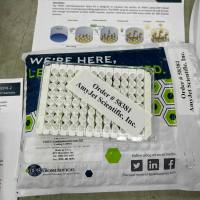In Vivo Detection of Neurotransmitters with Fast Cyclic Voltammetry
互联网
互联网
相关产品推荐

大肠杆菌体内生物素化试剂盒(不含 BirA 感受态细胞)-E. coli in vivo Biotinylation Kit (without BirA Competent Cells)
¥12

DAR-4M AM,A cell-permeable, photo-stable nitric oxide (NO) fluorescent indicator with a detection limit of ~10 nM.,阿拉丁
¥8797.90

1,8-二氮杂环十四烷-2,9-二酮对照品标准品 Caprolactam cyclic dimer(CAS:56403-09-9)
¥100

大肠杆菌体内生物素化试剂盒(含 BirA 感受态细胞)-E. coli in vivo Biotinylation Kit (with BirA Competent Cells)
¥12

In vivo imaging sampler(AF647-RIS (24 nmol) + AF647-RISPC (24 nmol))
¥22
相关问答

